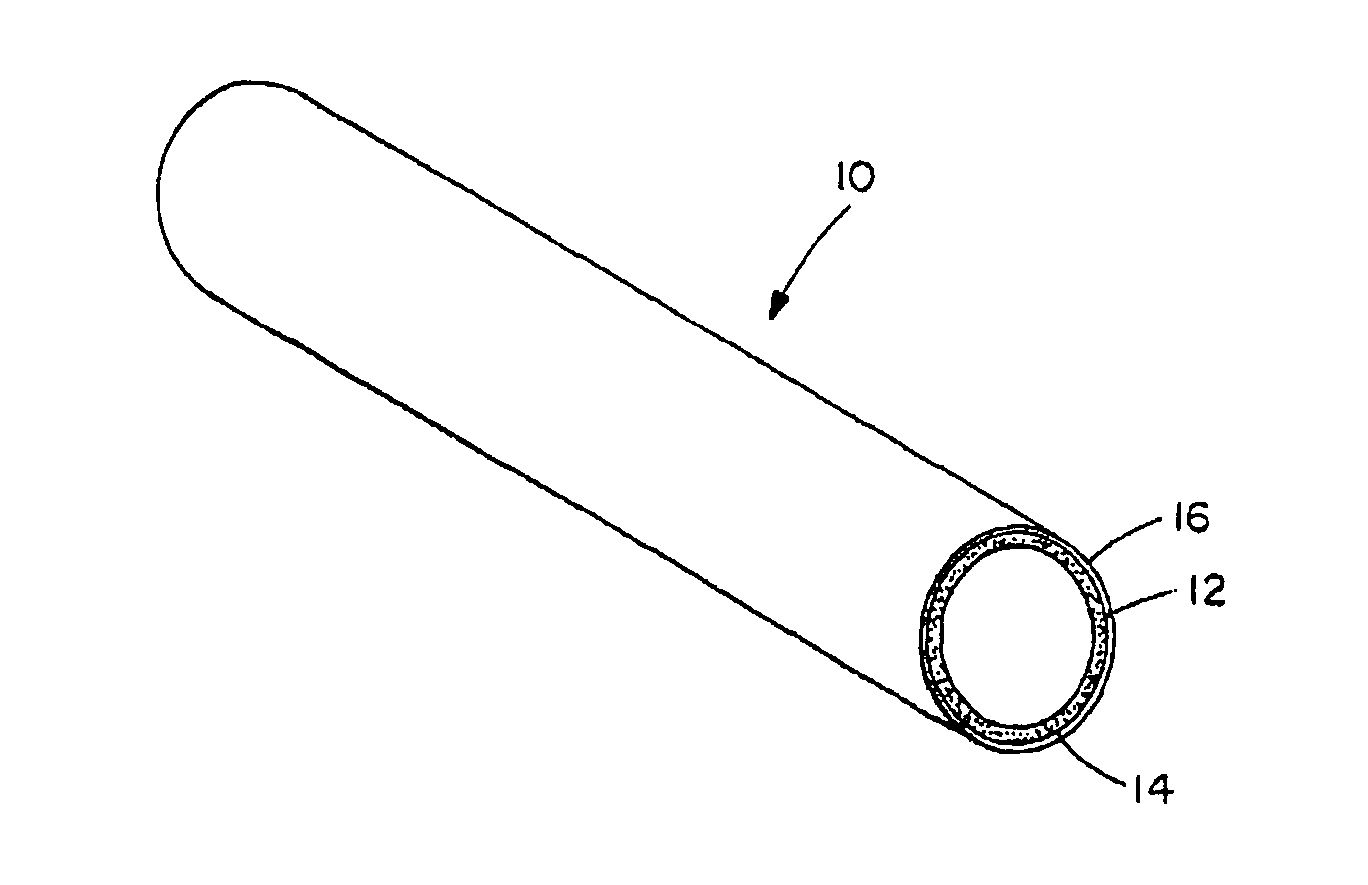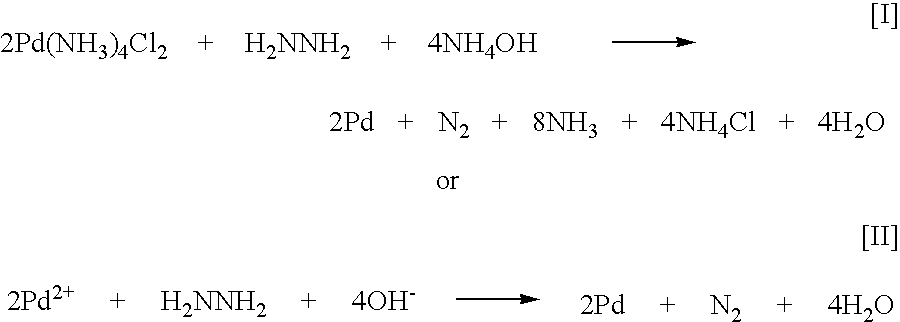Method for fabricating composite gas separation modules
a gas separation module and composite technology, applied in the field of composite gas separation module manufacturing, can solve the problems of unsuitable polymer membranes, unfavorable morphology formation or propagation, and low mechanical strength, and achieve the effect of reducing the formation or propagation of unfavorable morphologies, and being thinner and/or more uniform
- Summary
- Abstract
- Description
- Claims
- Application Information
AI Technical Summary
Benefits of technology
Problems solved by technology
Method used
Image
Examples
example 1
[0093]This example describes the fabrication of a composite structure that includes palladium and a 0.1 micron grade porous 316L stainless steel (PSS) support.
[0094]A 6 inch long, 0.5 inch outside diameter (OD) section of PSS tube, welded to sections of 0.5 inch OD dense 316L stainless steel tube on each end, was obtained from Mott Metallurgical Corporation. Contaminants were removed by cleaning the tube in an ultrasonic bath with alkaline solution at 60° C. for one half hour. The tube was then sequentially rinsed using tap water, deionized water and isopropanol.
[0095]The support was oxidized in air at 400° C. for 6 hours wherein the rates of heating and cooling was 3° C. per minute. Following oxidation, helium permeation through the support was measured at a rate of 170 normal cubic meters per square meter per hour (reference temperature=0° C., reference pressure=1 atmosphere) (Nm3 / m2-hr) at a pressure difference of 1 atm and a temperature of 20° C. (prior to oxidation, the rate of...
example 2
[0101]This example describes the fabrication of a composite structure that includes palladium, a porous metal layer intermetallic diffusion barrier, and a 0.1 micron grade porous HASTELLOY® C-22® support. (HASTELLOY® C-22® is a nickel-chromium-molybdenum-iron-tungsten alloy.)
[0102]A 31.3 inch long, 1 inch O.D., section of porous HASTELLOY® C-22® tube, welded to sections of 1 inch O.D. dense, non-porous 316L stainless steel tube on each end, was obtained from Mott Metallurgical Corporation. Contaminants were removed by cleaning the tube in an ultrasonic bath with alkaline solution at 60° C. for one half hour. The tube was then sequentially rinsed using tap water, deionized water, and isopropanol.
[0103]The tube was oxidized in static air at 600° C. for 12 hours. The rate of heating and cooling was 3° C. per minute. Following oxidation, helium flux through the support was measured to be 16.0 Nm3 / m2-hr at a pressure difference of 1 atm and a temperature of 20° C. Subsequent helium flux ...
PUM
| Property | Measurement | Unit |
|---|---|---|
| porosity | aaaaa | aaaaa |
| porosity | aaaaa | aaaaa |
| pore diameters | aaaaa | aaaaa |
Abstract
Description
Claims
Application Information
 Login to View More
Login to View More - R&D
- Intellectual Property
- Life Sciences
- Materials
- Tech Scout
- Unparalleled Data Quality
- Higher Quality Content
- 60% Fewer Hallucinations
Browse by: Latest US Patents, China's latest patents, Technical Efficacy Thesaurus, Application Domain, Technology Topic, Popular Technical Reports.
© 2025 PatSnap. All rights reserved.Legal|Privacy policy|Modern Slavery Act Transparency Statement|Sitemap|About US| Contact US: help@patsnap.com


